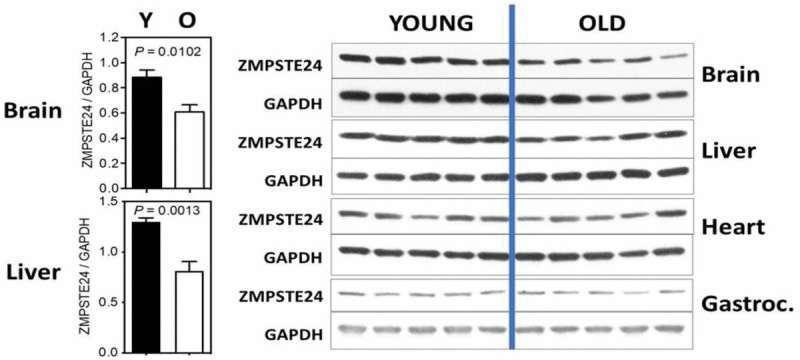Exploring the role of lamin in normal aging

Since the discovery that mutations in the LMNA gene (which encodes the nuclear structure components lamin A and C) lead to Hutchinson-Gilford progeria syndrome (HGPS), people have speculated that lamins may have a role in normal aging.
The most common HPGS mutation creates a splice variant of lamin A, progerin, which promotes accelerated aging pathology. While some evidence exists that progerin accumulates with normal aging, an increasing body of work indicates that prelamin A, a precursor of lamin A prior to C-terminal proteolytic processing, accumulates with age and may be a driver of normal aging. Prelamin A shares properties with progerin and is also linked to a rare progeroid disease, restrictive dermopathy.
In a new research perspective published in Aging, researchers Stanley R. Primmer, Chen-Yu Liao, Oona M.P. Kummert, and Brian K. Kennedy from the Buck Institute for Research on Aging, National University of Singapore and National University Health System describe mechanisms underlying changes in prelamin A with aging and lay out the case that this unprocessed protein impacts normative aging.
"Patients with the laminopathy, restrictive dermopathy (RD), have mutations in either ZMPSTE24 or LMNA, the latter associated with altered processing and the accumulation of prelamin A. RD has some phenotypes of accelerated aging; however, the condition is often very early onset and severe, making comparison with normal aging more challenging," state the researchers.
"This is important since intervention strategies can be developed to modify this pathway as a means to extend healthspan and lifespan."
More information: Stanley R. Primmer et al, Lamin A to Z in normal aging, Aging (2022). DOI: 10.18632/aging.204342





















